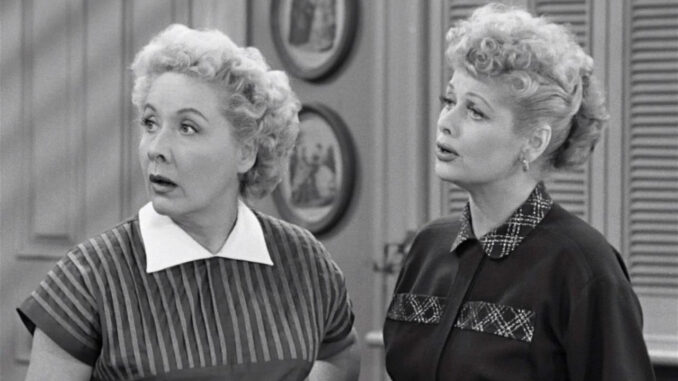
“Lucy, you got some ‘splainin to do.”
Ricky Ricardo’s classic line sums up the prankish nature of his unforgettable wife. The bona fide, yet sometimes controversial show, “I Love Lucy” has kept fans on the edge of their seats for 70 years. Decades later, very few things still compare to the slapstick sitcom starring married couple, Lucy Ricardo (Lucille Ball) and Ricky Ricardo (Desi Arnaz).
With six seasons of black and white absurdity, “I Love Lucy” cemented itself as one of the most groundbreaking and enduring shows of its time.
“It introduced the off-network syndication formula, recognizing the value of episode repeats,” Marc Berman, a senior coordinator with Forbes, said. “And, at a time when diversity on screen was reduced to seeing any rare character of color in a subservient capacity, ‘I Love Lucy’ was the first television series to feature an interracial couple.”
“I Love Lucy” defied societal norms by showcasing women in a new way compared to other cable television shows at the time.
“Though ‘I Love Lucy’ was not the very first TV show to feature a pregnancy, it was an early one, and broke barriers with the huge success of the storyline,” Lily Karlin wrote in the Huffington Post. “In fact, the episode in which Lucy gives birth to Little Ricky aired the day before President Eisenhower’s inauguration, and drew substantially more viewers than his swearing in.”
I grew up watching “I Love Lucy.” As a child, I laughed at Lucy and her best friend Ethel Mertz’s (Vivian Vance) antics, finding them to be funny relatable characters. Looking back and watching the show again reminds me of the nostalgia and respect I have for this 1950s production.
“I Love Lucy’s” show structure followed typical sitcoms of the day with strict normative family ideals, such as a stay-at-home wife and working husband. However, its innovative filming style (filming with three cameras on 35-millimeter film in front of a live audience) and occasionally provocative (for the time) behavior (i.e. Lucille Ball and Desi Arnez, who were married in real life, sharing one bed on set in a few episodes) makes it an enduring and introspective series for the ages.
After the show’s end in 1957, Lucille Ball went on to find success in “The Lucy Show” from 1962-1968, and “Here’s Lucy” from 1968-1974. But no sequel can quite compare to the originality of “I Love Lucy.”
“Despite its dated references and old-fashioned family dynamics, this show remains hilariously entertaining,” Sierra Filucci with Common Sense Media wrote. “Lucille Ball was one of the greatest comic actors of all time and so her physical comedy is timeless. Her antics in this pioneering show have made ‘I Love Lucy’ one of the top sitcoms in TV history.”
From adults who grew up on the show, to even younger viewers, anyone can watch “I Love Lucy” on Amazon Prime or Paramount+. With its slapstick humor, goofy faces and traditional values, Christian families can enjoy this clean and timeless show for 70 more years and counting.
